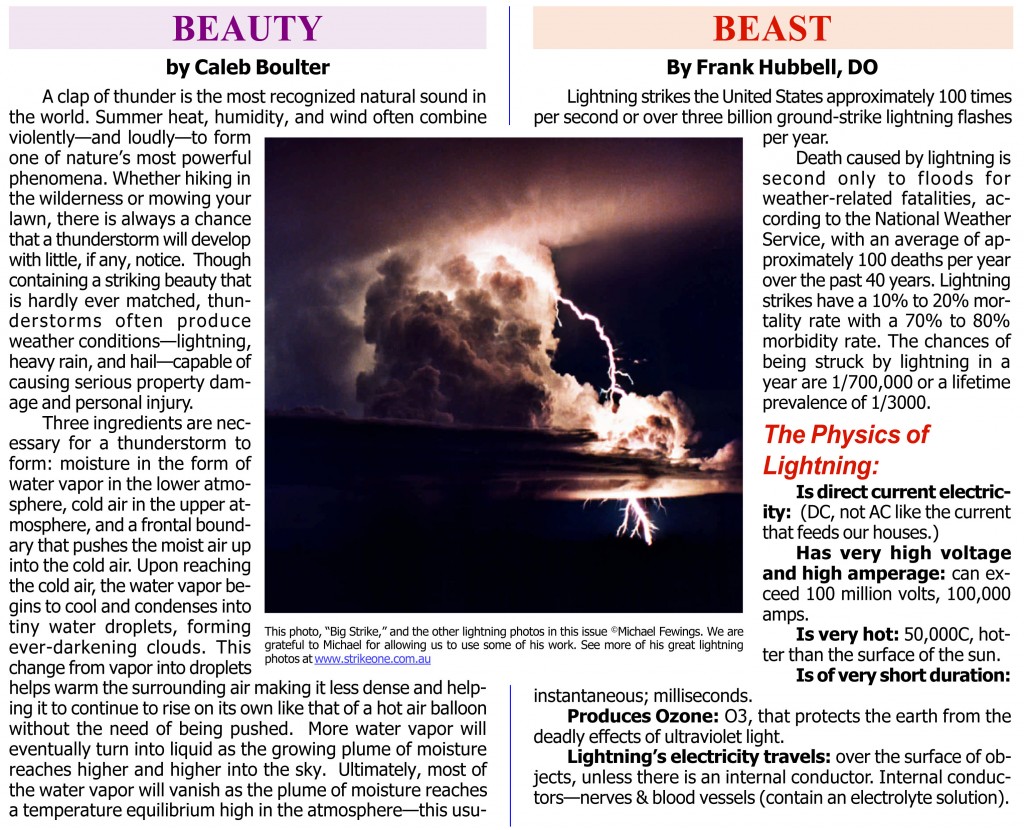Lightning and Lightning Detectors

March/April 2012 ISSN-1059-6518 Volume 25 Number 2
By Frank Hubbell, DO
Lightning and Lightning Detectors
The Situation:
A summer camp was leading a day hike for a group of 7th and 8th graders in the mountains of North Carolina. The afternoon sky grew darker and darker and more threatening. Suddenly an afternoon thunderstorm came. The leaders saw a flash of lightning. They started to count the seconds until they heard a clap of thunder. Ten seconds elapsed between the flash and clap. Using the commonly accepted calculation methods, they determined that the bolt of lightning was only two miles away, definitely too close for safety. As they were getting the kids organized into a lightning drill, another bolt of lightning lit up the sky, and there was an immediate report of thunder. Quickly looking around, they realized that the lightning had struck in the immediate vicinity, and one of their students was down. He had been struck by lightning, electrocuted.
Thunderstorms are one of nature’s most spectacular events. At any given moment there are at least 2000 thunderstorms going on around the world. They not only provide us with a beautiful display of thunder and lightning, but their bolts of electricity also produce ozone (O3) which is extremely important because it absorbs UVC light in the upper atmosphere. This process is a very good thing because if UVC light were to reach the surface of the earth, all living things would be destroyed.
The Problem:
Lightning produced by thunderstorms also produces the life-threatening risk of being struck by lightning and electrocuted or incurring other injuries. Potential lightning strikes are one of the concerns that all outdoor centers, outdoor programs, and outdoor leaders have during the summer months when thunderstorms can be common. It is essential that these groups or individuals have plans for dealing with thunderstorms, especially when they are caught outside with nowhere to find shelter.
All outdoor leader education should include how, when, where, and what are the concerns about thunderstorms. They must have a well-practiced lightning drill plan for dealing with these situations.



